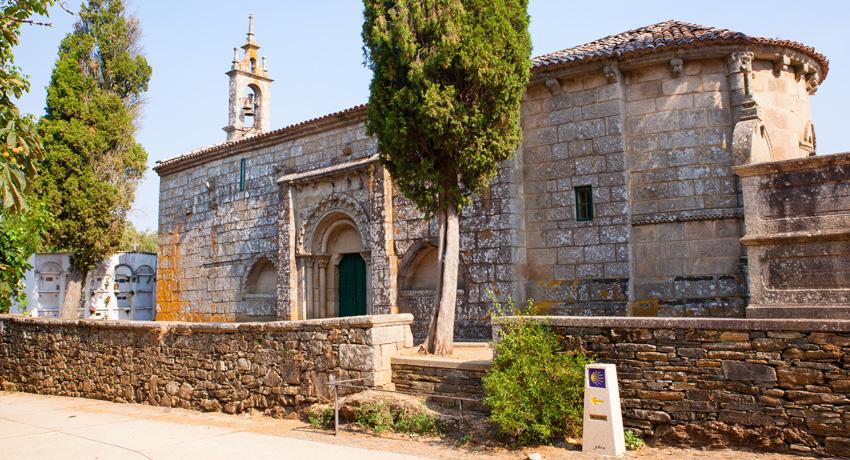Built in the 12th Century, it has been rebuilt over the years, but it conserves the original entryway. The portal is enclosed by semicircular arches with patterns. The rest of the church is neoclassical, including the bell tower.
The bridge, built in the late Gothic style, is the oldest in the Arzúa province dating from the 12th century. Its surface, originally made of slate has been reconstructed with granite. It leads us into the village of Ribadiso, near the end of the stage.
- 18 miles (29 km)
- 6-7 hours
This stage is the longest of the last 100Km French route and it is demanding towards the end. Enjoyable but long, take some time for a break at Melide which is halfway.
Description of the stage
During this stage you will leave the Lugo province and enter A Coruña, where Santiago de Compostela is located. This stage goes through Melide, an important town where both the Northern Camino and the Camino Primitivo merge with the French. For this reason you will find that there are more pilgrims on the following stages until you arrive in Santiago. We recommend to enjoy the food in this town, as Melide is famous for its pulpo a feira (octopus) and melindres (dessert).
Some pilgrims choose to complete the section between Palas de Rei - Arzua in two stages which gives you an idea that this stage is on the more challenging side. There are no big climbs along the way but the stage makes it difficult to get into your rhythm as you repeatedly go uphill and downhill.
The route is a mix of well conserved and repaired trails together with some more abrupt sections. As we near the end of the stage you will find several short, but demanding slopes. You will cross the Iso river and reach the village of Ribadiso while walking through some of the most spectacular scenery in el Camino. At the end of the day you will reach Arzúa, where you should take some time to try the renowned cheese varieties from this region (Arzúa-Ulloa). In March they hold a Cheese festival at the village dedicated to this local staple, famous enough to carry its own trademark. Have your passport stamped at the Church of Santiago de Arzúa.



